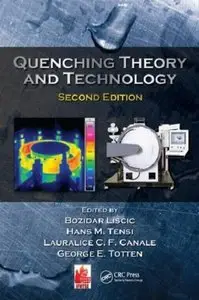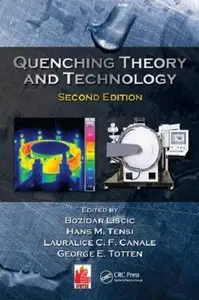Quenching Theory and Technology, Second Edition by Bozidar Liscic, Hans M. Tensi, Lauralice C.F. Canale and George E. Totten
English | 2010 | ISBN: 0849392799, 1420009168 | 725 pages | PDF | 20 MB
English | 2010 | ISBN: 0849392799, 1420009168 | 725 pages | PDF | 20 MB
Quenching is one of the most fundamentally complex processes in the heat treatment of metals, and it is something on which mechanical properties and distortion of engineering components depend. With chapters written by the most respected international experts in the field, Quenching Theory and Technology, Second Edition presents the most authoritative, exhaustive, and recent findings in this vital area.
Understanding and control of quenching and quenchants is a critical constant in all well established and emerging heat treatment process technology. The collection of up-to-date knowledge in this book is the latest outcome from continuing formal and informal discussions by experts within the framework of the International Federation for Heat Treatment and Surface Engineering (IFHTSE).
It covers topics including:
Thermo-and fluid dynamic principles of heat transfer during cooling
Wetting kinematics
Residual stresses after cooling
Computer modeling and prediction of microstructure transformation
Hardness distribution
Stress-strain and distortion
With revised and updated content from the first edition, this book adds coverage of important technological developments. Although the primary focus continues to be on the quenching of steel, it also details quenching of aluminum and titanium alloys, quench severity of selected vegetable oils, gas quenching, intensive quenching, and simulation of quenching. Presenting the most recent findings in this area, this essential piece of literature is a substantial contribution to the general field of the thermal processing of metals. It is useful not only for specialists in heat treatment practice, but also those in higher education or numerous specialized courses and seminars worldwide.



